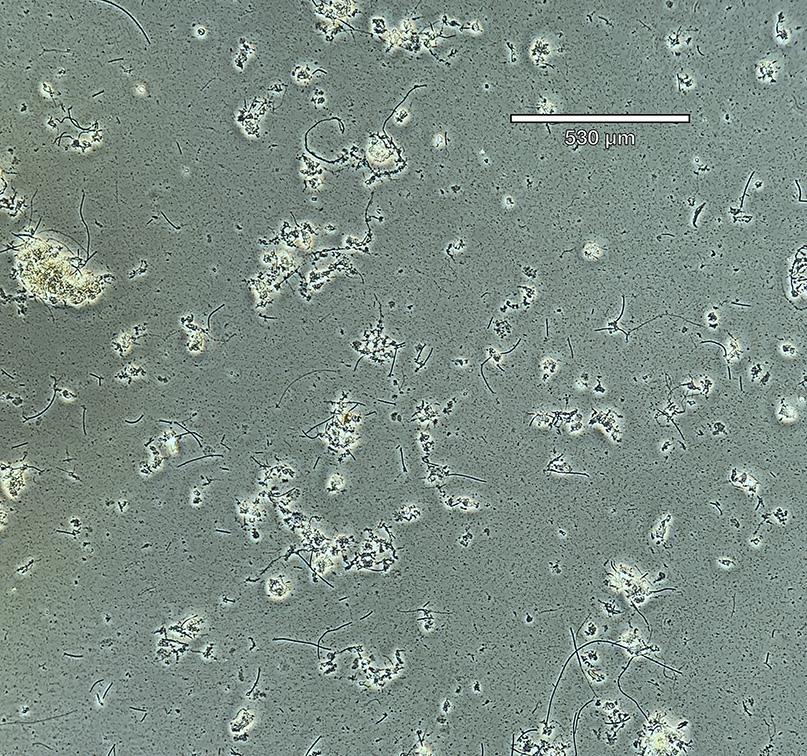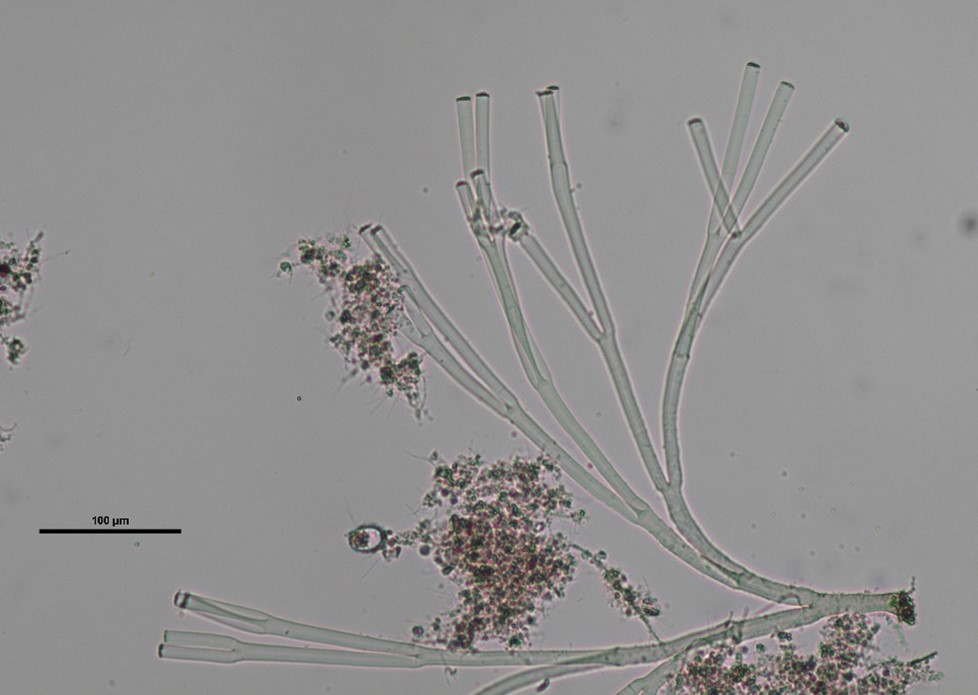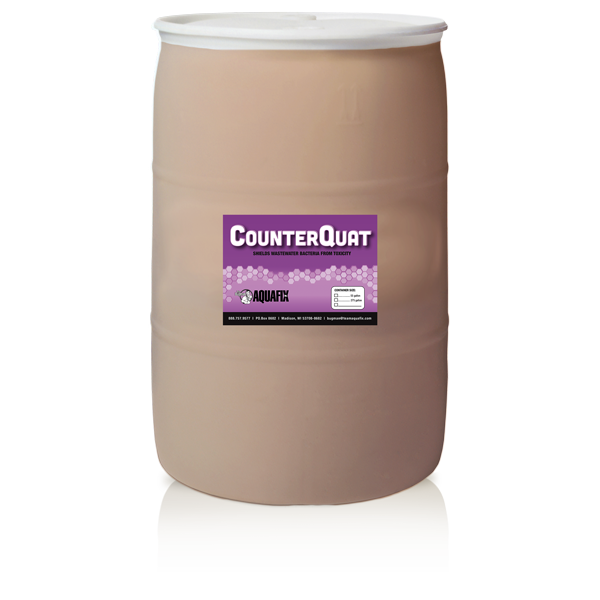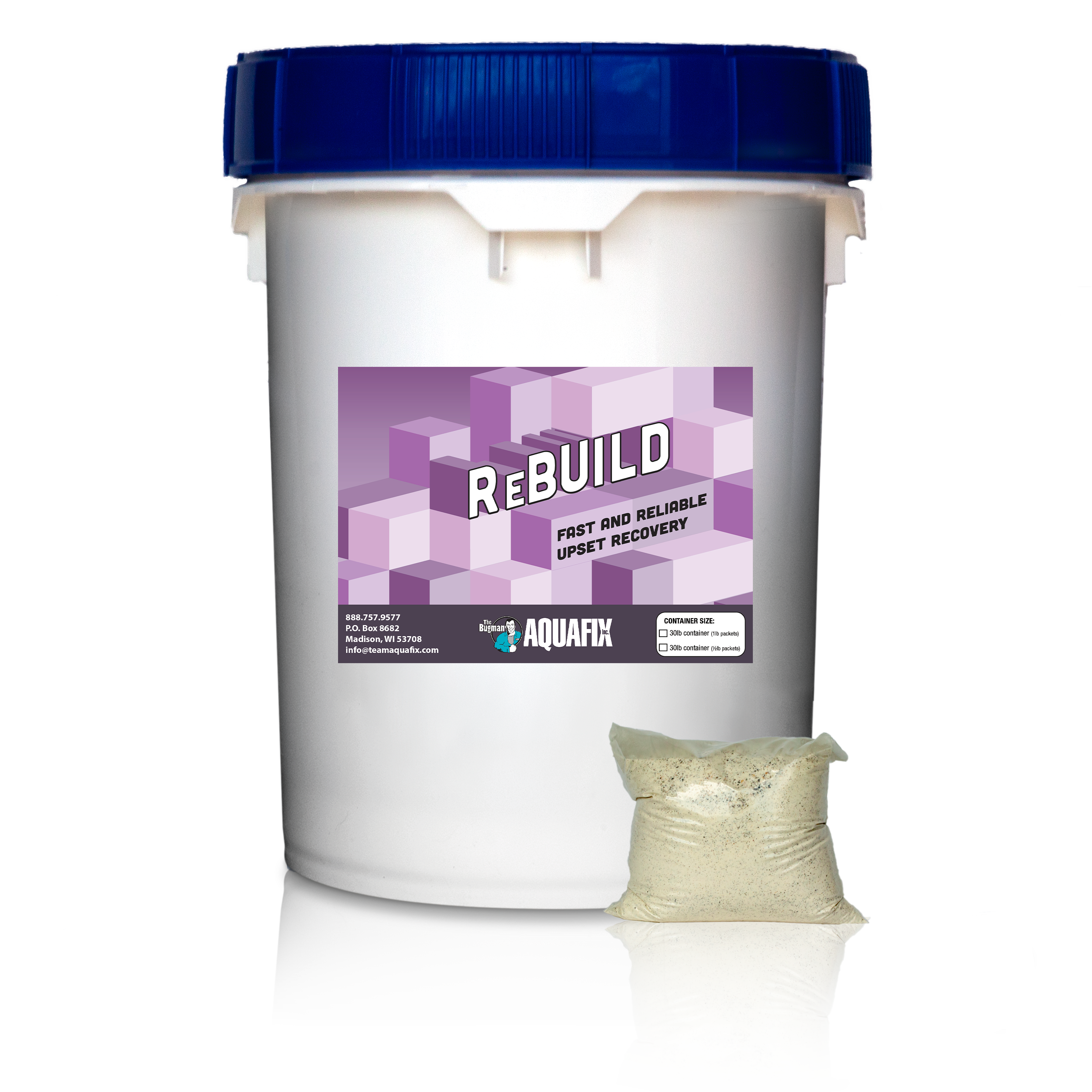Signs of Toxicity Under
the Microscope
Microscopy is an invaluable tool for diagnosing and addressing toxicity
issues in wastewater treatment plants.
by Natalie Walton, Aquafix Microscopist

Various toxins can contribute to toxicity in wastewater treatment plants, such as Quats (quaternary ammonium compounds) and PAAs (peracetic acid). These substances can disrupt bacterial health, leading to adverse effects on the overall treatment process. Microscopy is a powerful resource in helping to better understand your plant. However, determining what specific toxin you have or where it is coming from does not fall into that category. What microscopy can do is provide signs that a toxic upset has occurred or is occurring. In this article, we will discuss some of these signs to gain a better understanding of these indicators that can be helpful to effectively troubleshoot and maintain optimal plant performance.
Poorly Formed Floc
Floc formation is an essential process in wastewater treatment, aiding in the removal of suspended particles and pollutants. Typically, healthy floc have a well-formed structure and moderate size. However, under toxic conditions, floc may become fragmented, small, or absent altogether. On the other hand, if a plant is recovering from a recent toxic upset an abundance of free bacteria will be present, a result of new bacterial growth.

Metazoa and Protozoa
Another microscopic aspect to inspect is the metazoa and protozoa. These microorganisms play a vital role in the breakdown of organic matter and in maintaining a balanced ecosystem within the plant. Their sudden disappearance or death can indicate unfavorable conditions, such as the presence of toxic substances. If conditions are too unfavorable, metazoa and protozoa will be absent. Hopefully, these unfavorable conditions will be caught and addressed before it can get to that point.
Rotifers, in particular, are a great early detection for toxicity. If your plant is running well and you start to see an increase of dead rotifers compared to live ones, it can be an indication that you are in the beginning
stages of a toxic upset. This is because rotifers tend to be the first affected by toxicity. Therefore, monitoring rotifer populations can help identify toxicity issues at an early stage, enabling prompt remedial measures.
Rotifers are not the only organism that signal to toxicity, stalked ciliates can too. If unfavorable conditions are present, stalked ciliates will detach from their stalk in an attempt to escape these conditions. Therefore, if you observed “headless” stalked ciliates (such as in the photo), they can indicate recent or current toxicity.
Microorganisms play a vital role in the breakdown of organic matter and in maintaining a balanced ecosystem within the plant. Their sudden disappearance or death can indicate unfavorable conditions, such as the presence of toxic substances. If conditions are too unfavorable, metazoa and protozoa will be absent. Hopefully, these unfavorable conditions will be caught and addressed before it can get to that point.
Rotifers, in particular, are a great early detection for toxicity. If your plant is running well and you start to see an increase of dead rotifers compared to live ones, it can be an indication that you are in the beginning

stages of a toxic upset. This is because rotifers tend to be the first affected by toxicity. Therefore, monitoring rotifer populations can help identify toxicity issues at an early stage, enabling prompt remedial measures.
Rotifers are not the only organism that signal to toxicity, stalked ciliates can too. If unfavorable conditions are present, stalked ciliates will detach from their stalk in an attempt to escape these conditions. Therefore, if you observed “headless” stalked ciliates (such as in the photo), they can indicate recent or current toxicity.
Microscopy is an invaluable tool for diagnosing and addressing toxicity issues in wastewater treatment plants. By carefully examining the microscopic world, we can identify indicators such as the absence of metazoa/protozoa, poorly formed floc, headless stalked ciliates, and changes in rotifer populations. Detecting these signs early on allows for timely intervention, ensuring the continued efficiency and functionality of wastewater treatment processes.
Toxicity Solutions
Microanalysis Test Kit
- Identification of major and minor filaments
- Overview of floc structure, sludge age, and oxygen penetration
- Treatment and process recommendations
CounterQuat
- Mitigate potential upsets and protect bacteria from toxins
- Works against Quats, PAAs, and other cleaning agents
- Great for systems with frequent cleanouts

About the Author
Natalie Walton joined Aquafix in 2019 and focuses on performing microscopic analysis for customer samples, as well as conducting experiments on innovation in grease removal. She was also a key contributor to creating our Microorganisms Database supplying identification tips and research.




We are looking at getting a microscope what would be a good microscope choice for being able to diagnose and analyzes our wastewater? What would be the magnification of one that would suit our needs?
Thanks